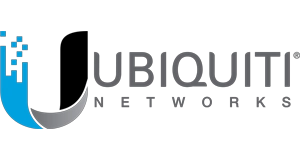If your business hasn’t already taken the leap to cloud computing it’s no doubt on your radar, and rightly so. Cloud-based technologies such as Office 365 and Microsoft 365 continue to revolutionise the way we work. From automating manual processes to predicting your next business strategy, tools that are now available via cloud technologies were once a pie in the sky concept.
Automation with a few clicks
Have you ever had the thought “There has to be a better way to do this” when you’re pushing through your daily grind? The chances are that there is, in fact, a better way, and it probably isn’t as hard as you think. Microsoft Flow was introduced into the Office 365 world some time ago now, and this has been a game changer for many organisations. The concept is quite simple; in the event that a certain action takes place, Microsoft Flow has the ability to automatically complete a chain of other actions on your behalf to streamline a process from start to finish. I spoke about integration in one of my previous articles, and Microsoft Flow is a great way to enable this. So next time you’re stuck doing the double entry and having to manage multiple systems to complete a seemingly simple task, it might be worth looking at automating the job in question; freeing up your teams’ time to close off the next deal that’s on the table or enhancing existing customer engagements.

Invaluable Insights at Your Fingertips
Business insights and intelligence (BI) is beginning to become quite the hot topic amongst cloud adopters. Essentially, in a nutshell, BI evaluates large sets of data to provide intelligent insights that tell a story. This could be anything from profiles on your regular customers, where they live, what their interests are. Information such as this could help you refine your marketing activities and tailor them closer to your audience. If you could improve your marketing to increase your conversion rate, it would have to be a good thing!
Additionally, finance departments are also praising the BI gods! Gone are the days of analysing a Profit and Loss report line by line against your budgets to see how you’re tracking. BI dashboards give these teams live insights to make quick, informed decisions to ensure your financial performance continues to be optimised.
Business owners are also building high-level dashboards that can demonstrate from a single screen how each department of an organisation is performing. They also have the ability to outline areas that may need attention in real time as opposed to the laborious task of manually building reports and deciphering them.
One of the most commonly used BI tools is Microsoft’s Power BI solution. And what’s best is that it integrates with your Office 365 environment meaning less disparate systems to manage.
Consolidate, Collaborate and Communicate
The advent of collaboration and communication tools like Microsoft Teams and Slack has also driven considerable efficiency improvements across the board. Microsoft themselves have also claimed that some of their top tier R&D focus remains around the Microsoft Teams solution which re-enforces the high demand for these types of services. The idea around teams is to bring all your day to day tools and systems into a single platform. Teams also offer a social interface which encourages a higher level of communications across teams by means of instant messaging and team channels. In turn, this allows for quick and easy posting of essential messages rather than bulk email messages being channelled through your organisation. It is hard to say that email will ever be dead, however, I firmly believe that over time, these new social communication channels will become the forefront of internal communications into the future.

The Security that Future You Can’t Live Without
It’s common that we are asked about how secure ‘the cloud’ is in comparison to the legacy of on-premise solutions. The answer is quite simple; it is considerably more secure. If we put it down to sheer economics, the level of security implemented against tools such as Office 365 would cost tens, if not hundreds of thousands of dollars, to implement in your organisation. In some instances, the security options available are only available in cloud solutions, so it really is a no brainer.
Office 365 has some great tools like Data Loss Prevention, Litigation Hold, eDiscovery, Advanced Threat Protection, Multi-Factor Authentication and so on. Most of these items don’t mean a lot to most people, and it can seem like a bit like Pandora’s box. However, working with your IT partner, you can leverage these tools to bring your security into the 21st century and protect yourself from external and internal threats.

It’s important to note that I mentioned internal threats, which are commonly overlooked in business. With Office 365 we can implement policies that prevent your sensitive data and intellectual property from leaving your business. Say you had a secret recipe or invention that was documented within your systems; would you find it valuable to be able to be alerted when someone touches this content? Or even still, tries to change it or attempts to email it outside of the organisation?
Security is a topic that I could go on for hours about, but the point I’m trying to make is that security in cloud systems has the potential to protect what you’ve worked so hard to create. You just need to make sure you’re taking advantage of it.
If you’ve got any questions or would like more information on how IT Solutions in Brisbane can help your organisation, feel free to get in touch with our team. This is our bread and butter and what we love doing!







